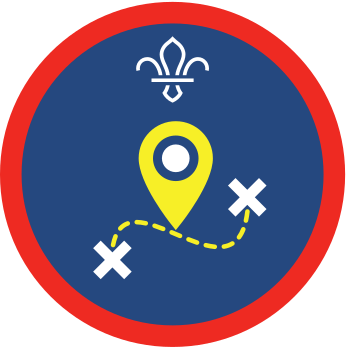Cache and dash
You’ll need
- Access to the internet
- Weather appropriate clothing
- Pens or pencils
- Scrap paper
- Cache treasure items
- GPS devices or a device with GPS capabilities such as a smartphone
Before you begin
- Sign up to play Geocaching, which will allow you to search for nearby caches to find as part of your exploration. If visiting official geocaches, you may want to bring along trinkets and treasure to leave or swap with the cache contents that you find. These helpful guidelines on the Geocaching website give some guidance about what you should and shouldn’t leave in a cache. If there aren’t enough caches nearby to walk to or between, then you could create and place your own and either register them as official geocaches or use them as temporary ones for your group.
- This activity probably needs to run across two sessions. Make sure you have enough leaders and helpers available to support the group and keep everyone safe in both.
- You’ll need to set a start and end point for this activity. These could be different places or one familiar location, like your meeting place. Choose locations in proximity to the caches and landmarks that are in your local area. Make sure to set a time limit to your activity and a place to meet back. Each group should have means to contact the person leading the activity.
- Carefully risk assess the area in which you run this activity, especially places where there’s tricky terrain or roads. Think carefully about your adult helper to young person ratios.
Run the activity
- Split into teams. Each will need a local map, a GPS device (either specialised or a smartphone with the Geocaching app/website open), writing materials and paper.
- Each team should search on the Geocaching website for nearby caches that they can find and then choose one. The person leading the activity should let everyone know the start and end points that were decided upon, so that groups can then plot a route on their map from their start point to the cache to the end point.
- Each group should note down coordinates for waypoints and landmarks that the route passes.
- When the routes are ready, groups should turn back to the Geocaching website and check the instructions for their chosen cache. There should be a page with advice on how to find the cache. This should be printed or downloaded so that the group walking the route can keep a copy with them as they go.
- An adult leader should check each route. When all of the routes have been finalised, each group should swap their route plans, waypoint/landmark coordinates and printed/downloaded cache instructions with another group.
- Everyone should stay in the same groups as before and follow the route they were given by the other group. They should examine and make notes on the route plan, especially if they might need to alter their course. When a team finds the cache, they could take a triumphant photograph or draw the contents of the cache and sign the logbook, before replacing it carefully where they found it.
- Follow the routes to the end point and meet back at the meeting place to see what treasures everyone found.
Reflection
By making your own caches, you’re creating gifts that you’ll never witness being received, but there’s still a thrill in knowing that someone will find your cache and enjoy the thrill of the search. Which do you think is more rewarding: discovering the treasure, or the journey you took through the great outdoors to reach the location of the treasure?
Geocaching is a great excuse to get out and explore. When hunting for your caches or placing your own, take a look at the environment around you. How does it make you feel? What wildlife can you spot? Geocaching is also a great excuse to get out and about for some exercise.
Safety
All activities must be safely managed. You must complete a thorough risk assessment and take appropriate steps to reduce risk. Use the safety checklist to help you plan and risk assess your activity. Always get approval for the activity, and have suitable supervision and an InTouch process.
- Adventure
This activity has specific rules and systems to make sure it’s managed safely. Take a look at adventure activities for more guidance.
- Outdoor activities
You must have permission to use the location. Always check the weather forecast, and inform parents and carers of any change in venue.
- Hiking and walking
Follow the guidance for activities in Terrain Zero, or the guidance for each the adventurous activity.
- Road safety
Manage groups carefully when near or on roads. Consider adult supervision and additional equipment (such as lights and high visibility clothing) in your risk assessment.
Change the length of the planned routes, as well as the start and end points to mix it up a bit. Teams could also try to plan routes that pass more than one cache.
Make sure that groups plan routes that take into account the needs of everyone in the group, not just those in their own small group. Consider the suitability of the start point, end point, length and terrain of the route.
All Scout activities should be inclusive and accessible.
For your next geocaching adventure, craft some handmade gifts to be hidden in the caches you find. You could make something that tells people who you are and which group found the cache last, so long as you don’t give away any sensitive information.
This is an opportunity for young people with experience geocaching, map-reading and hiking to support each other and share their knowledge.
